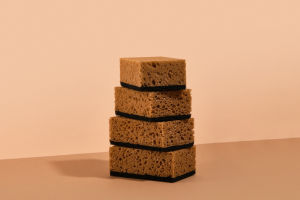Selecting the right sofa involves more than finding a comfortable seat; it's also about creating visual harmony in your living space.
A sofa often becomes a focal point, and choosing one that aligns with your home's overall style is key to achieving a cohesive, inviting look.
Here are some key considerations to help guide your selection.
1. Match the Style of Your Home
Every home has a specific style—be it modern, traditional, minimalist, or eclectic. The sofa you choose should reflect and enhance that aesthetic. Meanwhile, a traditional-style home might call for an ornate sofa with rolled arms and rich upholstery, lending a timeless appeal.
While it's possible to blend styles, ensure that the sofa complements rather than clashes with the existing decor. A mix of styles works best when there's a unifying element, like a color or theme, to bring them together.
2. Consider the Color Scheme
Choosing the right color for your sofa can either subtly blend it into the background or make it a striking focal point. Neutral shades—like gray, beige, or soft pastels—are versatile and work well in most interiors, allowing you to add or change accent colors through pillows, rugs, or wall art.
If your room has a monochromatic palette, a sofa in a slightly darker or lighter shade adds depth. For bolder styles with multiple colors, pick a sofa that incorporates or complements those hues for a harmonious look.
3. Focus on Size and Scale
The size of your sofa should align with both the room's dimensions and the proportions of other furniture. A large, bulky sofa can make a small room feel cramped, while a small, delicate sofa might look out of place in a spacious living area.
Measure the room carefully to ensure the sofa fits comfortably, leaving space for movement and other furniture.
For open floor plans, consider sectional or modular sofas that define spaces without walls, creating a natural flow from one area to another. A well-sized sofa helps maintain balance and ensures the room feels neither too empty nor overcrowded.
4. Choose the Right Materials and Fabrics
The fabric of your sofa can also shape the room's atmosphere. Soft fabrics like velvet or chenille can enhance a cozy, warm ambiance, while materials like leather or linen offer a sleeker look that suits modern and minimalist homes.
Durability and ease of maintenance are crucial, especially for households with children or pets. Stain-resistant fabrics or easy-to-clean options like leather or microfiber can be excellent choices, providing resilience without compromising style.
5. Accentuate with Accessories
A sofa feels more integrated when paired with complementary accessories. Consider adding throw pillows, blankets, or a coffee table that matches or complements your sofa's color and style. These small touches not only add comfort but also enhance the visual unity of the room.
Choosing a sofa that aligns with your home's overall style helps create a harmonious and inviting space. By focusing on style, color, size, and material, you can select a sofa that complements the rest of your decor.
After all, a sofa is not merely a piece of furniture—it's a reflection of your home's character and a gathering place that brings your space to life.


